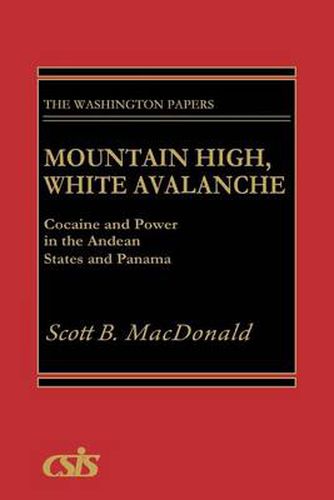Readings Newsletter
Become a Readings Member to make your shopping experience even easier.
Sign in or sign up for free!
You’re not far away from qualifying for FREE standard shipping within Australia
You’ve qualified for FREE standard shipping within Australia
The cart is loading…






The Latin American drug trade has become one of the major problems confronting the United States in the late 20th century. The key dynamic of that trade is cocaine, which is primarily produced in the Andean nations of Bolivia, Colombia and Peru. The cocaine trade’s influence, however, has spread outwards into other Andean states - Chile, Ecuador and Venezuela. Moreover, countries on the Andean periphery, such as Panama, have become enmeshed in the trade as transit points and money-laundering centres. This book examines the cocaine trade in the Andean states and Panama with a special emphasis given to the relationship between cocaine and power, or stated in another fashion: what are the linkages between the political and economic power of those in the cocaine trade, the narcotraficantes, and the governments in the region? Important parts of this issue are the drug-insurgency nexus and the significance of the debt crisis. Although the book concentrates on the structure of the cocaine industry in the Andean states and Panama, the final chapters offer policy options on how to contend with the problem.
$9.00 standard shipping within Australia
FREE standard shipping within Australia for orders over $100.00
Express & International shipping calculated at checkout
The Latin American drug trade has become one of the major problems confronting the United States in the late 20th century. The key dynamic of that trade is cocaine, which is primarily produced in the Andean nations of Bolivia, Colombia and Peru. The cocaine trade’s influence, however, has spread outwards into other Andean states - Chile, Ecuador and Venezuela. Moreover, countries on the Andean periphery, such as Panama, have become enmeshed in the trade as transit points and money-laundering centres. This book examines the cocaine trade in the Andean states and Panama with a special emphasis given to the relationship between cocaine and power, or stated in another fashion: what are the linkages between the political and economic power of those in the cocaine trade, the narcotraficantes, and the governments in the region? Important parts of this issue are the drug-insurgency nexus and the significance of the debt crisis. Although the book concentrates on the structure of the cocaine industry in the Andean states and Panama, the final chapters offer policy options on how to contend with the problem.